Privet: description, types, features of planting and care

Privet is considered one of the most hardy and unpretentious shrubs used in landscaping backyard territories. It will be useful for novice gardeners to find out what this culture is remarkable for, what types and varieties of it are most popular in modern gardening, what are the nuances of growing this shrub, how to propagate privet and care for it.

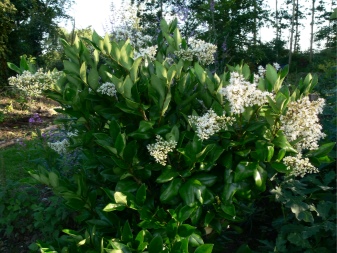
Description
To the genus privet (Latin name - Ligustrum), experts include shrubs and trees that are part of the olive family. In the wild, representatives of this genus grow on the territory of European and Asian countries. They are found in Australia and North Africa.
Depending on the species plant height can vary from 1.5 to 6 meters. The height of low-growing varieties usually does not exceed 0.8-1.2 meters... Plants have strong erect shoots covered with gray-green or brown-brown bark. Visually, privet resembles lilacs, with which they belong to the same family.
Privet leaves are simple, rounded, with a pointed or blunt apex. The upper side of the leaves is shiny, smooth, dark emerald in color. The underside of the leaves has a pale herbaceous color.
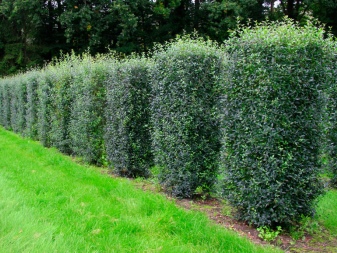

Representatives of the described genus enter the flowering phase at the beginning of summer. Flowering duration is 1.5-2 months... The inflorescences are voluminous, lush, reaching 5-20 centimeters in length. The flowers are small, porcelain white, four-petaled, exuding a characteristic aroma. It is noteworthy that the blooming privet attracts bees, butterflies and other pollinating insects to the garden.
The plant enters the fruiting phase in the last summer months. Fruit – globular inedible berries of black or ink-blue color, ripening in September... Representatives of the described genus are distinguished by their amazing unpretentiousness, shade tolerance, resistance to drought and low temperatures.
When planning to plant privet bushes on your site, it is important to consider that it has a tendency to intensive growth. In the absence of regular haircuts, the shrub quickly takes on an untidy look.
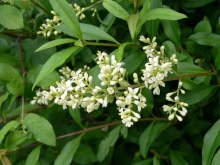
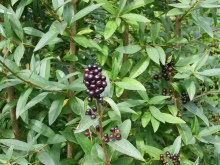

Types and varieties
The genus described includes about fifty varieties of plants that differ from each other both in morphological structure and in requirements for growing conditions. Below is a list of varieties and types of privet that can adequately decorate any household plot.
Ordinary
A wild-growing variety that is widely used in gardening home gardens. It is a sprawling lush bush, consisting of many upright strong shoots. Leaves are simple, elliptical, with a pointed top. The average height of the bush varies between 2-4 meters... Blooms with the arrival of summer. The flowers are tiny, porcelain-white, united in airy cone-shaped brushes.
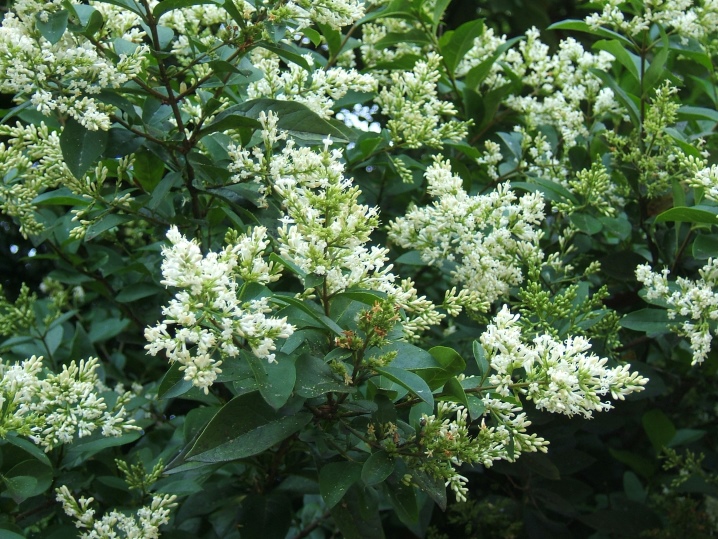
This variety has several varieties. The most popular ones can be noted.
- "Aurea" (Aureum) - a medium-sized variety of common privet, used in ornamental gardening. It is a neat bush with a height of 1.6-2 meters. Shoots are erect, strong, brown-brown, covered with elongated glossy greenish-yellow leaves. In autumn, the foliage of the plant acquires a spectacular yellow-orange color (hence the other common name - yellow-leaved privet).
Flowering time - June-July. The flowers are very small, snow-white, united in compact openwork panicles. Fruit ripening occurs at the beginning of autumn. Fruits are blueberry inedible berries.
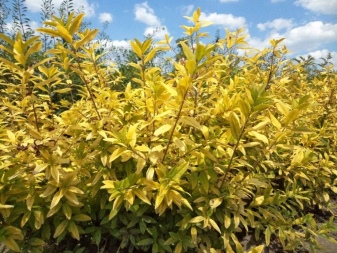

- "Vicar" - a hybrid variety of privet with unusual foliage color. An adult shrub can grow from 1 to 1.8 meters in height. Shoots are strong, erect, red-brown, covered with ovoid or lanceolate greenish-golden leaves with a pointed tip.
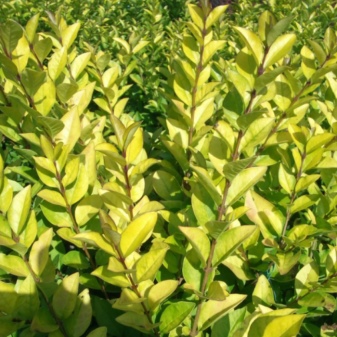
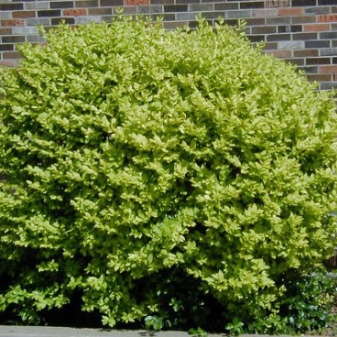
- Lodense - an unpretentious variety of common privet, often used by designers in the design of group compositions. The plant is a short (0.6-0.9 meters high) compact bush. Shoots are thin, firm, covered with reddish-brown bark. Leaves are narrow, elongated, emerald in color.
In autumn, the foliage of the plant acquires a brownish-bronze tint. The flowering period is June-July. Inflorescences are small, fusiform, reaching 6-10 centimeters in length. The flowers are small, fragrant, porcelain white.
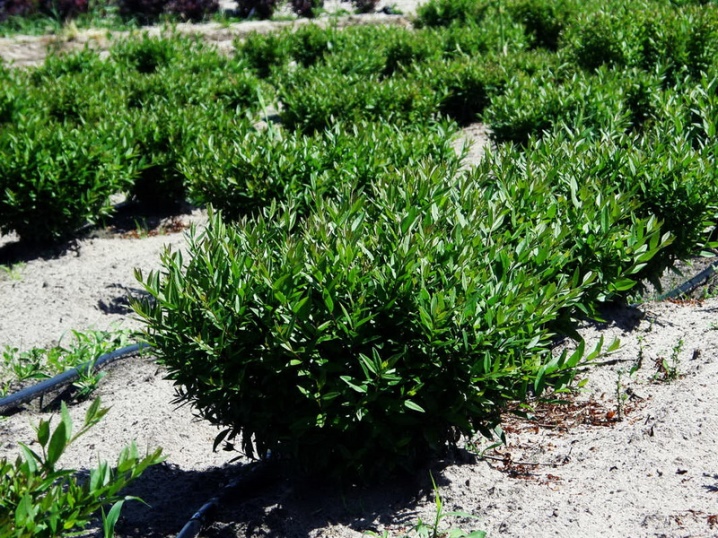
- "Atrovirens" Is a hardy cold-tolerant variety, easily amenable to formative pruning. The height of the bush can reach 2.5-3 meters. The plant has strong erect shoots, densely covered with emerald ovoid leaves. With the arrival of autumn, the foliage turns reddish-brown. The flowers are tiny, creamy, fragrant, collected in openwork brushes.

Other varieties deserve attention, which are found in garden plots less often than ordinary privet.
Shiny
A wild-growing variety found in the countries of East Asia. Is powerful tall bush with strong branched shoots. The leaves are elongated, elliptical, with a pointed tip. The outer side of the leaves is smooth, shiny. The flowers are small, white-cream, collected in voluminous panicles 15-18 centimeters long.

Variegated
An original garden form, notable for its unusual color of foliage. Represents strong spreading bush with many erect stems. The central part of the leaves is greenish-olive, the edges are milky-beige.
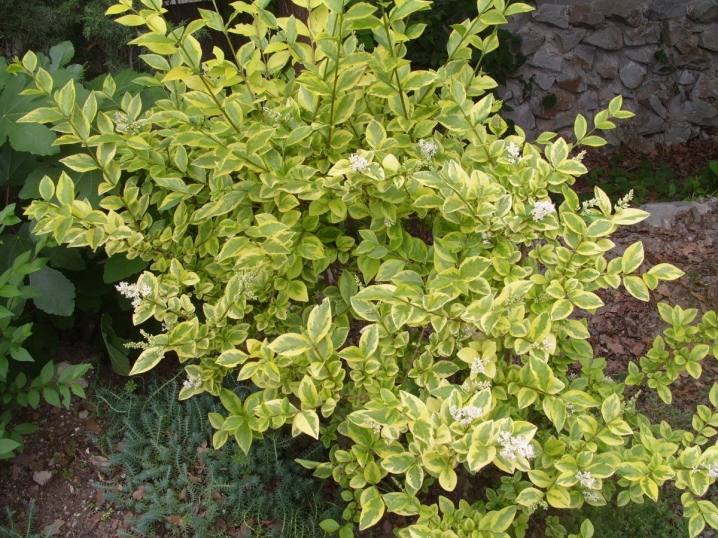
Japanese
A wild-growing variety that is widely used in ornamental horticulture. Plant height can reach 5-6 meters... The shrub has powerful erect shoots covered with a pale gray-brown bark. Leaves are smooth, emerald in color, elongated, reaching 5-10 centimeters in length.
The flowers are small (0.5-0.6 cm across), snow-white, combined into lush inflorescences 7 to 15 centimeters long. Fruits are inedible small purple-black berries.
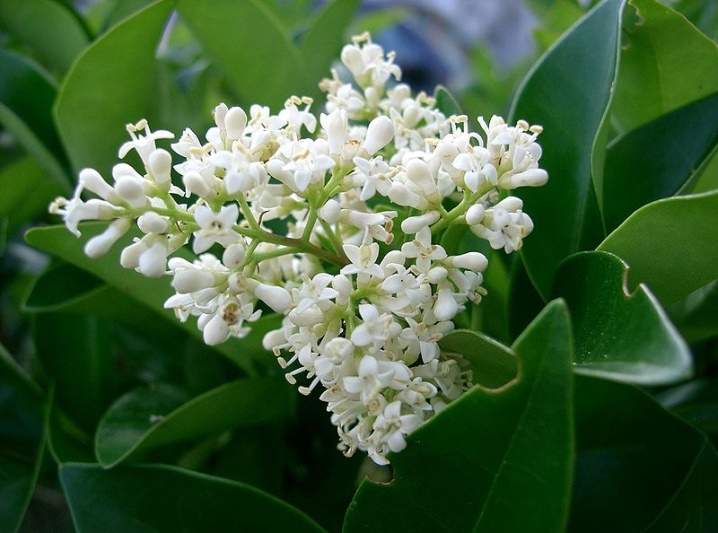
Rotundifolia
A very unusual round-leaved Japanese privet. The height of this plant usually does not exceed 1.5 meters.... With the arrival of summer, the bush is covered with small lush brushes, consisting of tiny milky white flowers.

Oval (Ligustrum ovalifolium)
A wild species popular with modern gardeners. The plant is a highly branched shrub with a height of 3 to 4.5 meters... Leaves are elliptical, with a pointed tip. The flowers are small, porcelain white, four-petaled, with a specific aroma.
All parts of the plant, including fruits, are poisonous. From this variety, breeders have managed to obtain a number of attractive decorative forms.
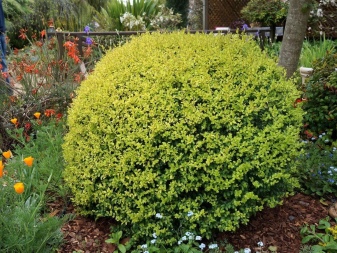
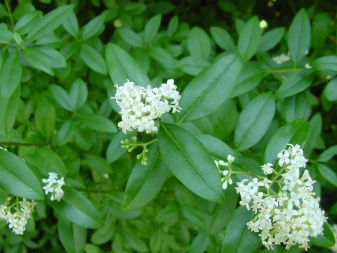
Ibota
A wild variety of privet native to Japan. The plant is a spreading, medium-sized shrub with a height of 2-2.5 meters... Since this species is prone to very rapid growth, experienced gardeners recommend cutting the plant at least 2 times a year. Flowering occurs in the second half of summer.Inflorescences are small creamy white paniculate brushes that exude a specific aroma.

Eeska
A species found in the territory of the Far East. It is a sprawling shrub about 2 meters high... Leaves are elliptical, smooth, with a sharp tip. Inflorescences are short panicles of light cream color.
Privet of this variety can easily tolerate temperatures as low as -20 ° C.
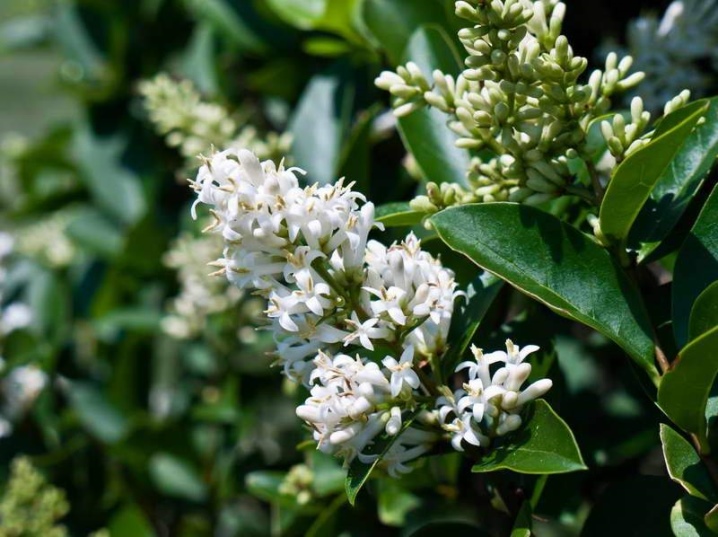
Dull-leaved
A wild species native to Japan, Korea and northeastern China. Average the height of this shrub varies from 2.7 to 3 meters... Leaves are light green, dull, opposite, wavy at the edges. Inflorescences are loose white-cream panicles, reaching 8-10 centimeters in length.
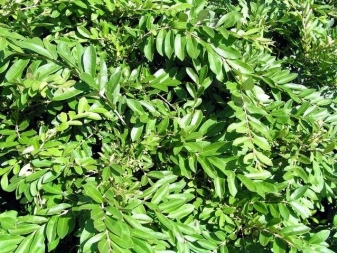
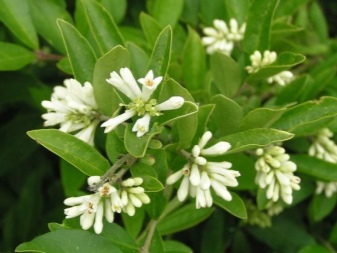
The sharpest
The original variety found on the territory of the PRC. It is an evergreen shrub, densely covered with narrow pointed leaves. Inflorescences are short (3-7 centimeters long), snow-white, conical.
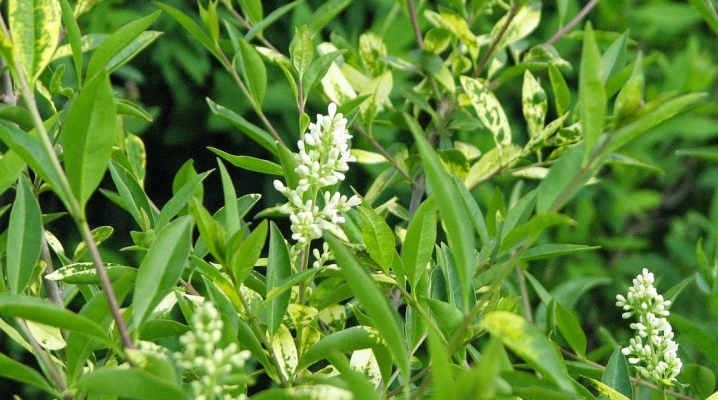
Dense or compact
A species found in the Himalayan mountains and southwestern China. It is a powerful and highly branching shrub with a height of 2 to 4 meters... The crown diameter can vary from 1.8 to 2 meters. Easily tolerates haircuts, does not bloom.

Quihou
A wild variety of privet used in horticulture and landscaping. Represents unpretentious shrub, densely covered with small dense leaves. Blooms in late summer. At this time, the bush is covered with numerous paniculate inflorescences up to 20-25 centimeters long. The flowers are small, snow-white or white with a cream shade.
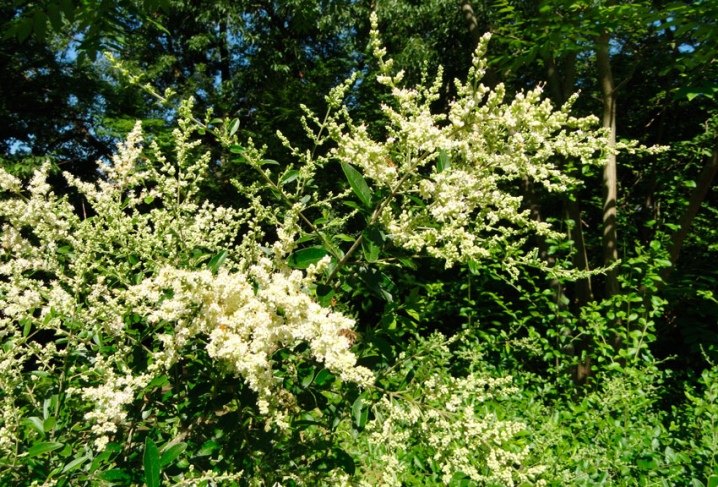
Chinese
A very interesting wild-growing species found in the territory of Asian countries. It is a highly branched deciduous shrub height from 2 to 7 meters... The plant has erect pubescent shoots of brown-brown color. The leaves are simple, rounded, pale green in color, reaching 5-7 centimeters in length. The flowers are small (3.5-5.5 millimeters in diameter), snow-white, collected in compact racemose inflorescences.
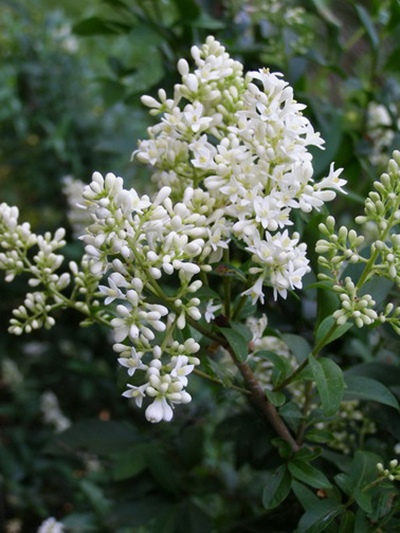
Landing features
Privet belongs to unpretentious and hardy crops. However, experienced gardeners recommend growing it in sunny areas with well-drained fertile soil with a neutral or slightly alkaline reaction. Under these conditions, the plant will be able to maximize its decorative effect.
Seedlings with a closed root system can be planted and replanted during the entire growing season. It is recommended to plant young plants with an open root system in spring or autumn (September-October).
It is important to consider that the spring planting should be done before the buds open. In the autumn period, planting and transplanting shrubs is carried out before frost.
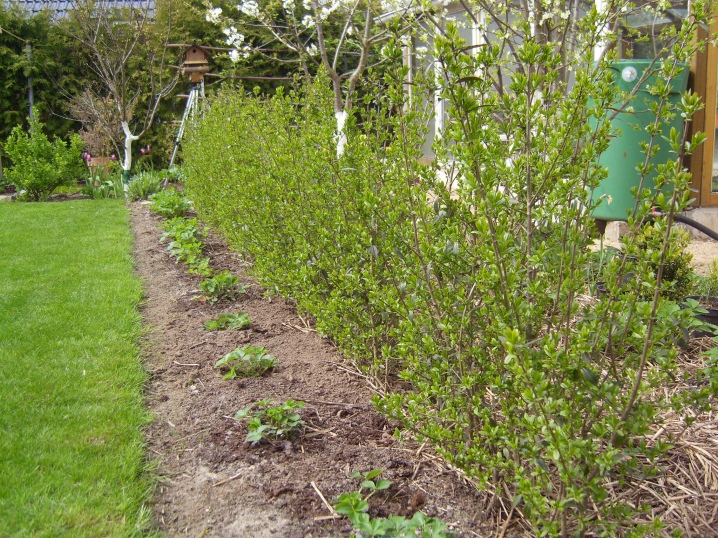
In the place reserved for planting young bushes, pits with a diameter of 60-65 centimeters and a depth of 30-35 centimeters are arranged. Then the pits are spilled abundantly with water and wait until it is completely absorbed. After that, a layer of drainage (gravel-crushed stone mixture) with a thickness of about 15 centimeters is laid on the bottom of the pit.
Next, the pit is half filled with soil mixture with the addition of 100-120 grams of nitroammophoska. The soil mixture is prepared in advance from sod land, leaf humus and sand (3: 2: 1). Then the roots of the seedling are straightened, they are vertically placed in the pit and carefully covered with the remaining soil mixture from all sides.
It is important to note that if in the future the gardener does not plan to propagate the matured plant with shoots, then the root collar of the seedling should not be buried in the ground during planting.
After planting, the ground around the bush is lightly tamped, watered and covered with mulch.

Subtleties of care
The complex of basic measures for the care of privet includes:
- periodic watering;
- top dressing;
- forming trims (haircuts).
The procedure for preparing the shrub for wintering requires special attention.Some types of privet are only able to withstand short-term frosts, which is why they need a reliable winter shelter.
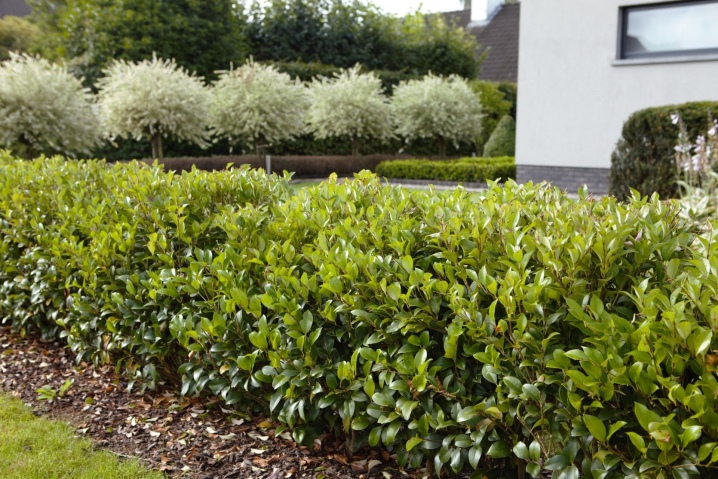
Watering
Representatives of the privet genus are able to endure the lack of moisture in the air and in the soil. Gardeners recommend watering this crop rarely, but abundantly. The recommended water consumption per adult bush is about 40-50 liters.... In one season, it is enough to water the plant 4-5 times.

Top dressing
During the period of intensive development of shoots and leaves, this plant needs organic feeding. To replenish the plants' need for organic matter, in the spring, you can add 1 bucket of leaf humus under each bush once.
If desired, humus can be replaced with a ready-made organic fertilizer (based on nitrogen), recommended for feeding flowering shrubs.

Pruning
The first pruning of privet is carried out almost immediately after it is planted in the ground. When the young plant is fully acclimatized, its shoots are slightly shortened. This procedure stimulates the development of new shoots, which will make the bush more lush.
When the cut shoots grow 12-15 centimeters, they are shortened again. This procedure is regularly repeated in the first 2 years after planting the plant in open ground. In the third year, experienced gardeners usually carry out a full-fledged shaping haircut.... In the course of its implementation, the bush is most often given a neat spherical, pillow-shaped or columnar shape.
In addition, privet is often grown in the form of a standard tree. So, with the help of annual pruning, a plant stem is first formed, and then a rounded crown.
Also, to obtain standard forms, gardeners carry out plant grafting using the budding method.

Preparing for winter
Common privet and a number of its other frost-resistant species are usually not covered before winter. Heat-loving species and varieties of this culture need protective shelters. Before the onset of cold weather, such plants are pinned to the ground with wooden staples, after which they are covered with spruce branches... The ground around the base of the bush is sprinkled with mulch to protect the roots from freezing.

Reproduction methods
For the cultivation of shrubs, gardeners use most often cuttings and layering... In rare cases, are used the seedsextracted from the fruits of the plant.
Cuttings
Cuttings are harvested in the summer, when the plants complete their flowering. Previously, the strongest and healthiest shoots are determined on the bushes, which are cut into cuttings 10-15 centimeters in size. Next, containers are prepared for rooting the planting material. To do this, a layer of turf soil is laid at the bottom of each container, on top of which a layer of clean sand is poured. The substrate is well spilled with water and allowed to be completely absorbed.
Then the cuttings are placed in a moist substrate, deepening them by about 5 centimeters. After planting the cuttings, the container is covered with a plastic cap or a cut plastic bottle. During the entire rooting period, the substrate in the container is regularly moistened. Rooting of cuttings usually occurs within 3-4 weeks.
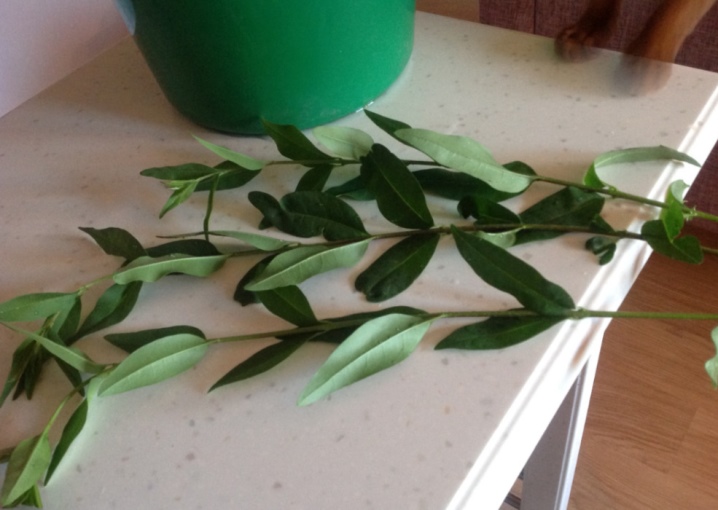
Layers
Another simple and effective way to propagate shrubs is to use cuttings. To do this, in the spring, the strongest long shoot is bent from the bush, incised in the central part from the lower side and pinned to the ground (the hairpin is fixed at the point of the incision). From above, the place of fixation is covered with fertile soil and covered with sphagnum. At the same time, the upper part of the shoot is not instilled.
During the entire rooting period, the sphagnum cuttings are regularly watered at the shoot fixation point. Successful rooting will be evidenced by the formation of young green shoots in the place of fixation. They are separated from the mother plant and planted in a permanent place next spring.

Seeds
Gardeners rarely resort to the seed method of reproduction of privet, since it is the most laborious and time-consuming. Seeds are taken from ripe fruits, dried and stratified at home for 2-3 months at 0 ° C. You can sow seeds directly on the beds before winter - in this case, they will undergo natural stratification.
Seeds, stratified at home, are sown in the ground in the spring. The first shoots usually appear after a year.
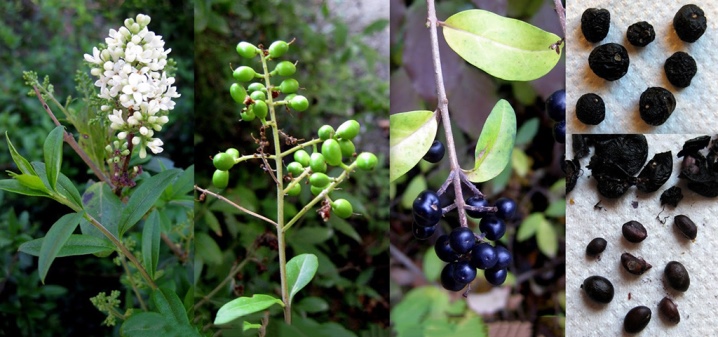
Diseases and pests
Representatives of the privet genus are plants that are resistant to the development of diseases and pests. However, improper care or deterioration of external conditions can reduce the immunity of plants, making them vulnerable to parasitic insects and pathogens.
So, excessive watering, high air and soil humidity can cause the development cercospora... With this disease, rusty-brown or brown-red spots appear on the leaves of the plant. Treatment involves spraying the bush with solutions of systemic fungicides (Ciproconazole, Alirin-B).

If the privet has acquired a painful appearance, partially shed its leaves - this may indicate a damage to the plant. privet moth... The larvae and caterpillars of this pest damage the leaves of the bush, as a result of which they begin to curl, turn yellow and fall off. The fight against the parasite involves spraying with insecticides - "Entobacterin", "Lepidocide".
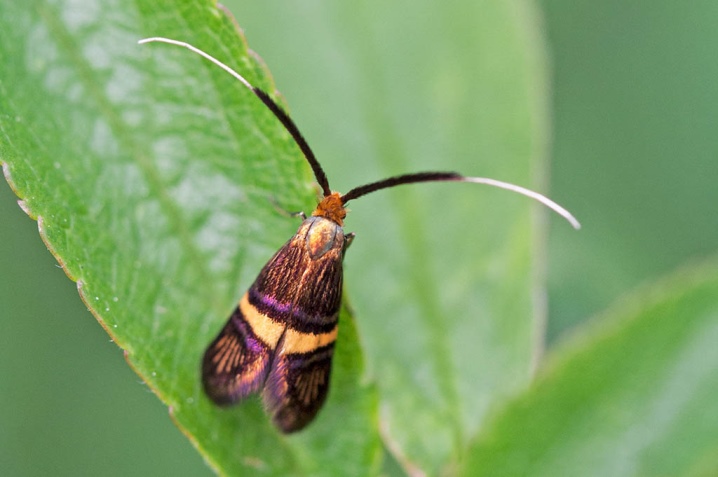
Use in landscape design
In ornamental gardening, privet is most often used to create hedges. This hardy shrub is able to organically fit into a group mixed composition of perennial plants. He also looks great as a soloist. Privet is also used to create topiary figures... Considering that this shrub easily tolerates a haircut, the formation of topiary does not cause any particular difficulties.
Using special garden shears with long blades and handles, you can shape the privet bush into almost any shape.
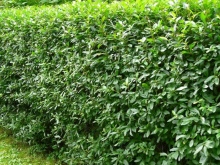


Landscape designers use this plant to create Japanese gardens. In this case, the shrubs are cut in the "nivaki" style, which provides for a special technique for shaping the crown of the tree. Pruning in this style is carried out in May-June.
Many tall trees and shrubs are ideal neighbors for privet.... Privet is organically combined with both deciduous and coniferous crops. The privet soloist looks original, surrounded by blooming perennials - roses, lilies, asters, chrysanthemums.


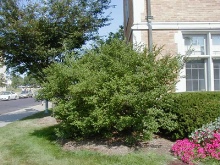
You will learn more about growing privet from the following video.



































































The comment was sent successfully.